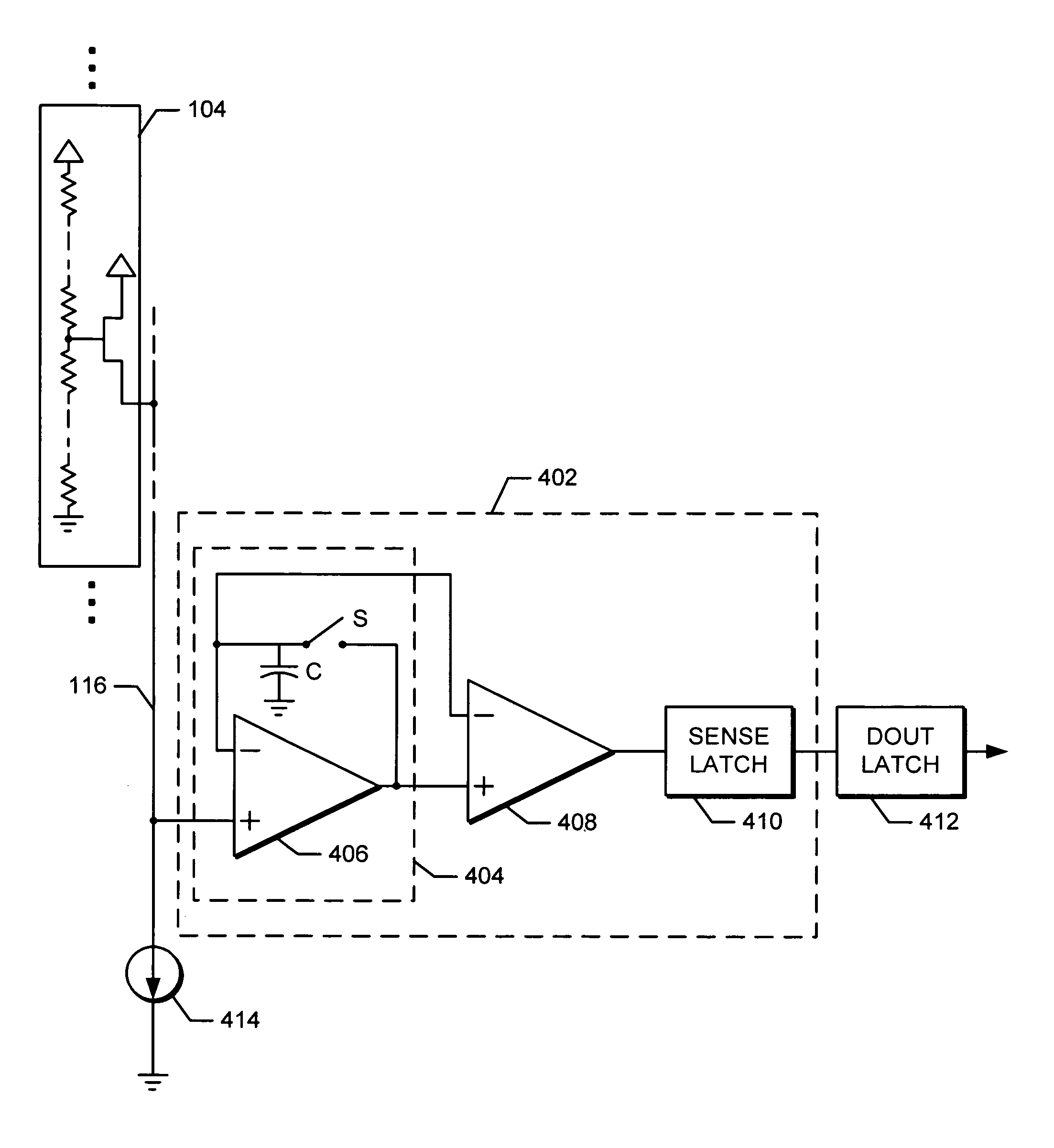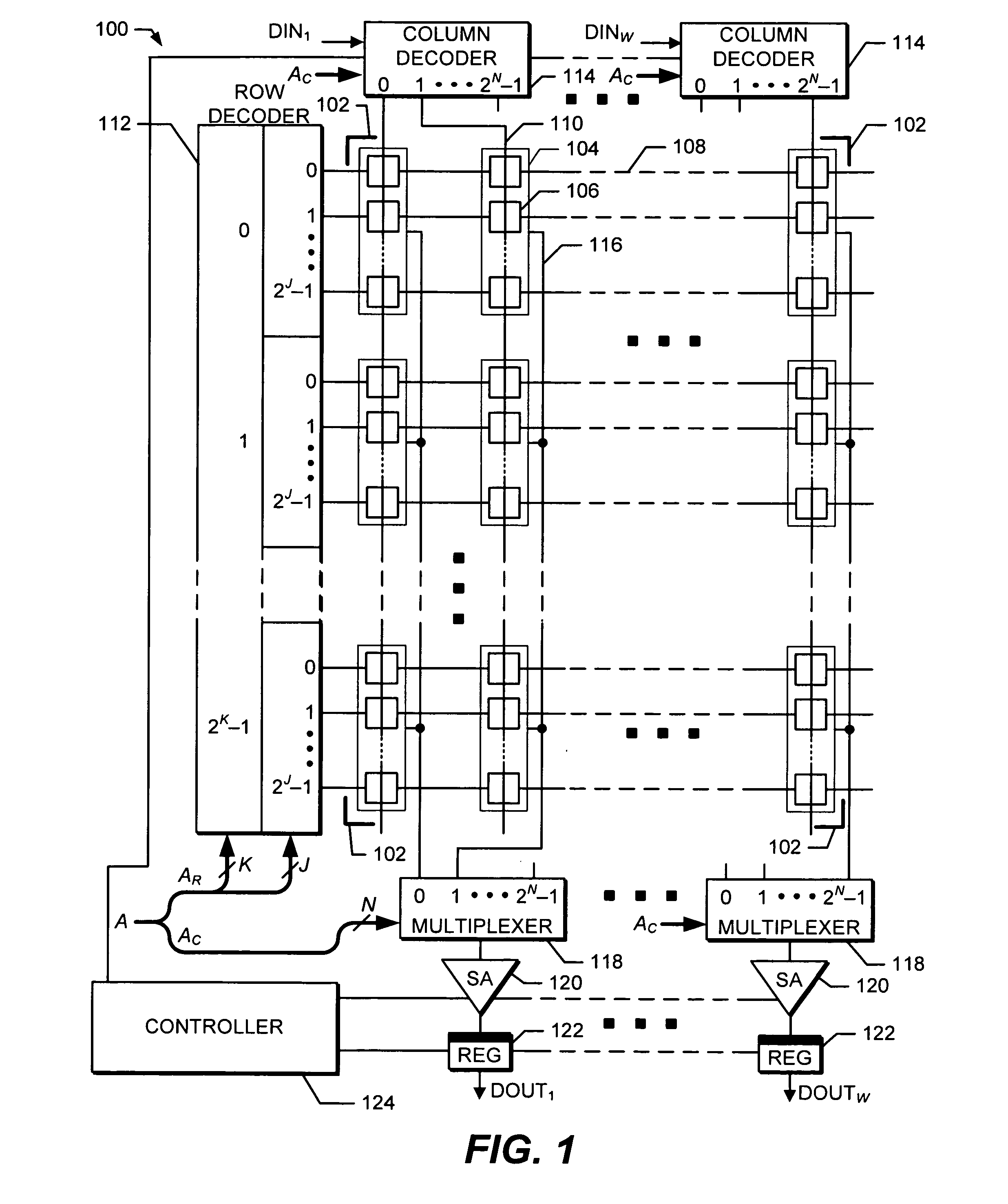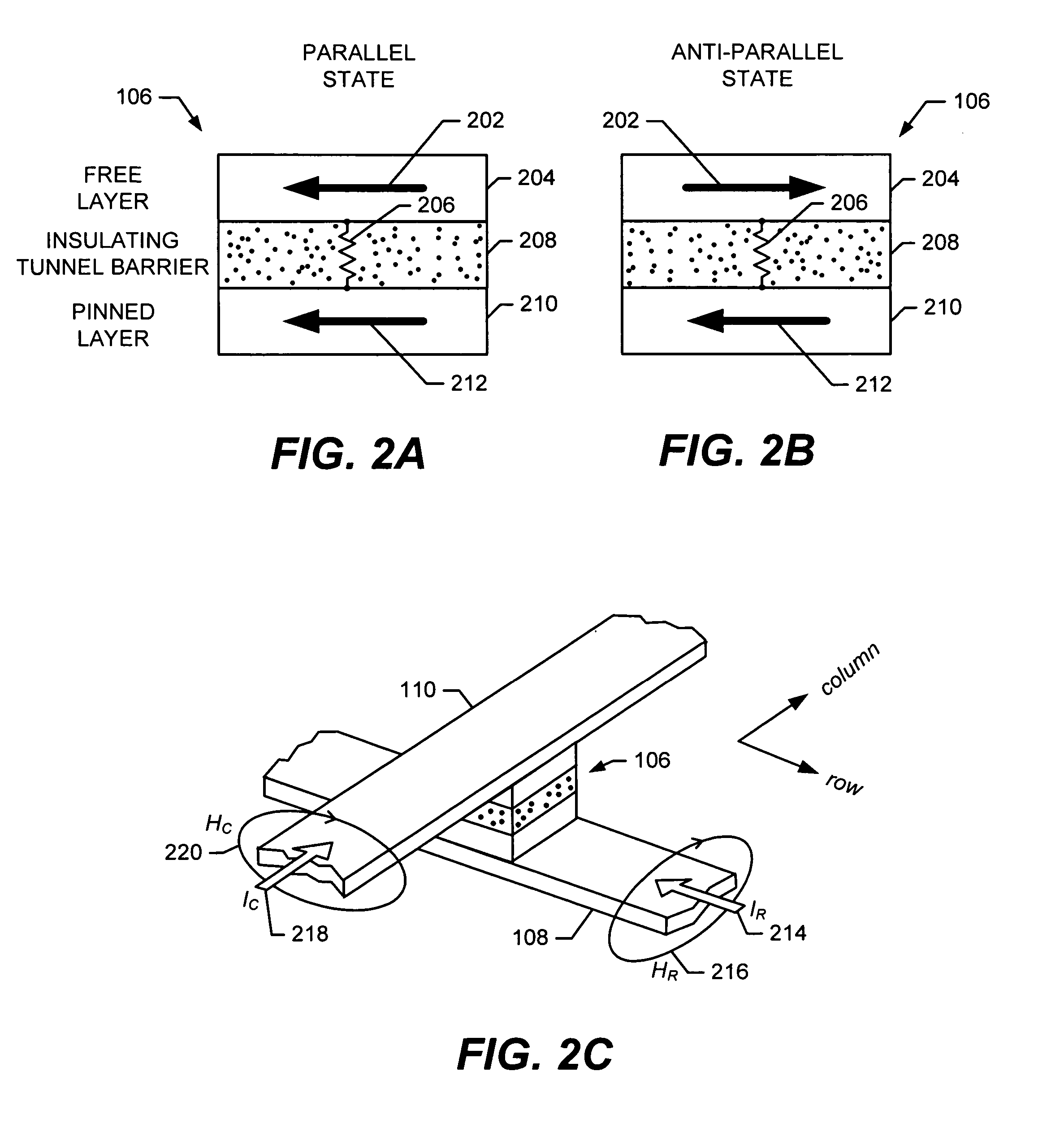Method and apparatus for a sense amplifier
a sense amplifier and random access technology, applied in the field of magnetic random access memories, can solve the problems of data loss, complex control circuitry to continually refresh, leakage,
- Summary
- Abstract
- Description
- Claims
- Application Information
AI Technical Summary
Benefits of technology
Problems solved by technology
Method used
Image
Examples
Embodiment Construction
[0028]Implementations of the present invention concern a multi-function circuit to sense and store a first voltage, compare the first voltage with a second sensed voltage, and latch the result of the comparison. Further, the circuit can be placed in a low-power state. The circuit has advantageous application as a sense amplifier for memory technologies such as MRAM where the logical state of a cell is determined by reading the cell's voltage output a first time, writing the cell to a known state, reading the cell's voltage output a second time, and then comparing the two voltages to infer the original state. Hereinafter, the multi-function circuit will be termed simply a “sense amplifier,” even though the circuit also performs the functions of a sample-and-hold circuit, comparator circuit, and latch circuit.
[0029]Implementations of the present invention also concern the use of a single sense amplifier circuit to determine the state of a memory cell in a manner that is relatively ins...
PUM
 Login to View More
Login to View More Abstract
Description
Claims
Application Information
 Login to View More
Login to View More - R&D
- Intellectual Property
- Life Sciences
- Materials
- Tech Scout
- Unparalleled Data Quality
- Higher Quality Content
- 60% Fewer Hallucinations
Browse by: Latest US Patents, China's latest patents, Technical Efficacy Thesaurus, Application Domain, Technology Topic, Popular Technical Reports.
© 2025 PatSnap. All rights reserved.Legal|Privacy policy|Modern Slavery Act Transparency Statement|Sitemap|About US| Contact US: help@patsnap.com



